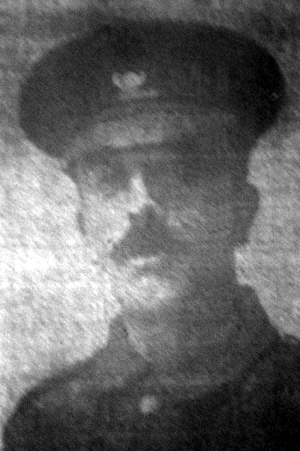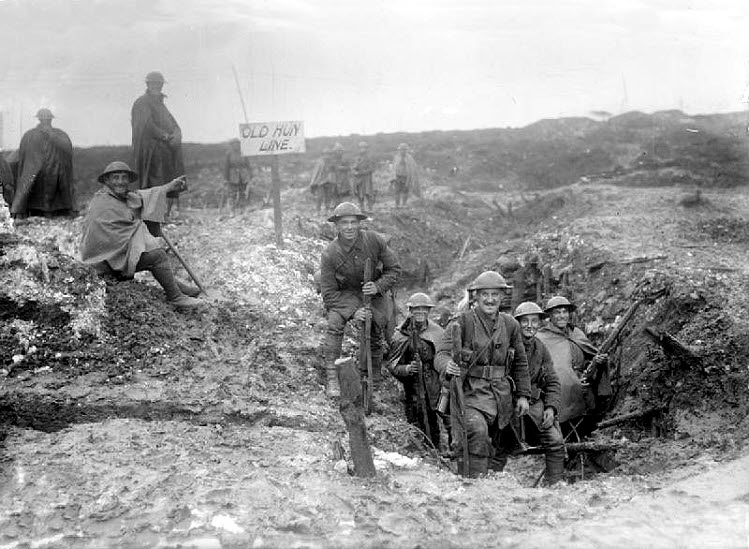
William Blackburn was born in Ossett in 1881 and in 1901, he was working as a layer-on at a rag machine in a nearby mill. At that time, he was living in Stithy Street, Streetside, Ossett with his widowed mother Sarah Jane Blackburn and two siblings. By 1911, 30 year-old William was now living at 12, Intake Lane, Ossett and was still unmarried, living with his mother and two siblings, but now working as a scribbling machine feeder, an unskilled occupation that may have influenced his decision to sign on for the British Army.
Like many other Ossett men, William Blackburn joined the King’s Own Yorkshire Light Infantry, by enlisting at Pontefract. The 2nd Battalion KOYLI were in Dublin in 1914 and landed in Le Havre on the 16th August 1914. William Blackburn’s service number of 28191 suggest he joined up in late 1915 or early 1916 and he may have been transferred to the 2nd Battalion after training. On the 28th December 1915, the 2nd Battalion transferred to 97th Brigade in 32nd Division.
William Blackburn was killed in action, aged 36 years, on the 2nd February 1917, one of 58 men from the 2nd Battalion, KOYLI who died during that month as part of the 32nd Division. Private Blackburn was most probably killed in British operations on the Ancre from the 10th January to the 22nd February 1917, which forced the Germans back 5 miles (8.0 km) on a 4 miles (6.4 km) front.
“The 32nd Division (V Corps) advanced slightly into unoccupied ground on the 2nd February, near the Beaucourt–Puisieux road and next day Puisieux and River trenches, running north from the Ancre west of Grandcourt were attacked by the 63rd Division. Surprise was attempted, despite moonlight and snow on the ground. Two battalions advanced on a 1,300-yard (1,200 m) front, with one battalion guarding the left flank. Neighbouring divisional artilleries co-operated and a decoy barrage was fired near Pys, on the Fourth Army boundary. Counter-battery fire began on all German batteries in range of the attack at 11:03 a.m. and seven heavy artillery groups bombarded Grandcourt, Baillescourt Farm, Beauregard Dovecote and German trench lines.
Direction was lost during the infantry advance but by dawn the wreckage of Puisieux and River trenches had been captured, apart from about 200 yards (180 m) in the centre and posts on either flank. A German counter-attack on the right at 10:30 a.m. recaptured a post and at 4:00 a.m. a second attack was stopped by artillery fire. In the evening another British battalion continued the attack, as German counter-attacks were made all night, which recaptured several posts near the river.
The last part of Puisieux Trench was captured in the morning at 11:30 a.m., with 671 British casualties against 176 German prisoners taken. Grandcourt on the south bank of the Ancre had been made untenable and was abandoned by the Germans overnight, which led the British to bring forward an attack on Baillescourt Farm, to late on the 7th February by the 63rd Division and captured, along with part of Folly Trench south of Grandcourt, taken by the 18th Division.” 1

Above: British soldiers in a captured German trench at Serre in March 1917 after the Germans retreated to the Hindenburg Line.
William is buried at Auchonvillers Military Cemetery 2, Somme, France, grave reference I. K. 24. Auchonvillers is approximately 20 km south of Arras. From the outbreak of the war to the summer of 1915, this part of the front was held by French troops, who began the military cemetery in June 1915. It continued to be used by Commonwealth field ambulances and fighting units, but burials practically ceased with the German withdrawal in February 1917. The cemetery now contains 528 Commonwealth burials of the First World War, the French graves having been removed to other burial grounds.
CWGC heastone photograph courtesy of Mark Smith
References:
1. Falls, C. (1940). Military Operations France and Belgium 1917 Volume I: The German Retreat to the Hindenburg Line and the Battles of Arras (IWM & Battery Press 1992 ed.). London: HMSO. ISBN 0-89839-180-6